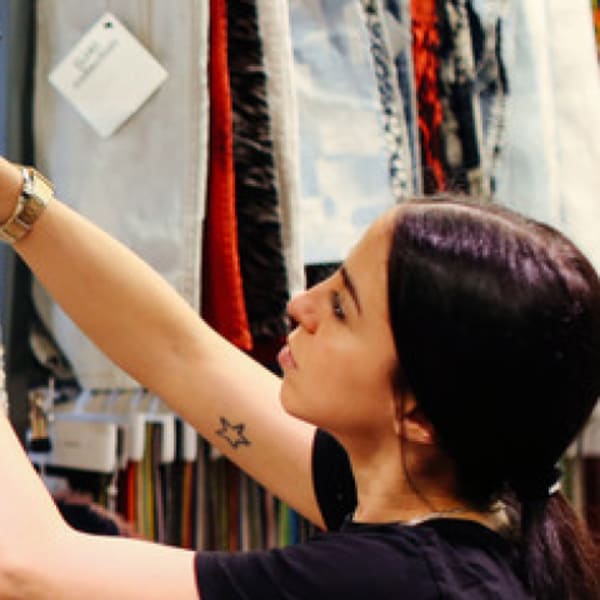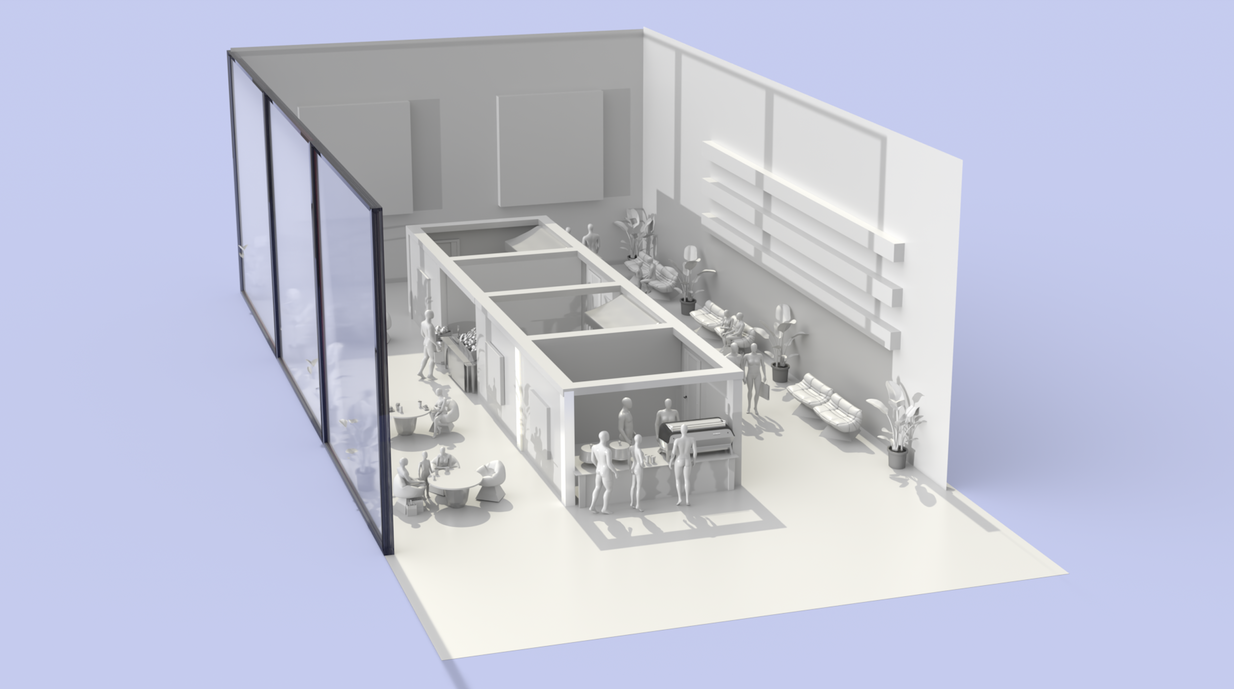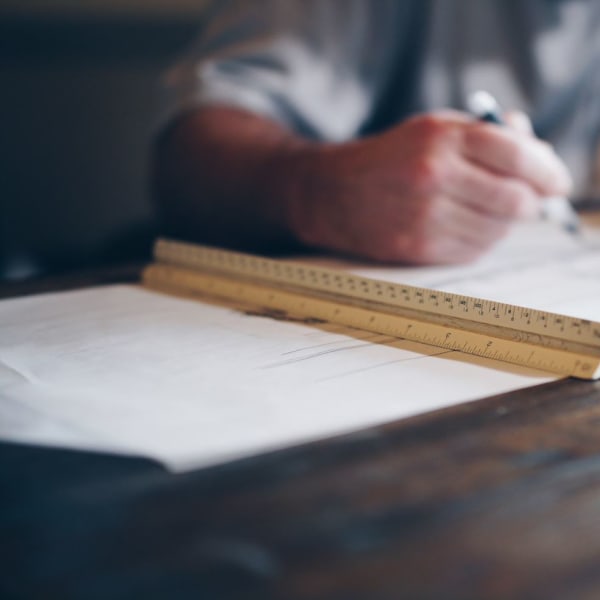
A sustainable guide to product design

- Written byCarys Thomas
- Published date 20 June 2022

In his work 'The Philosophy of Sustainable Design', Jason McLennan notes that designers should strive to “eliminate negative environmental impact through skilful, sensitive design.”
With the effects of climate change now increasingly apparent, product designers must be committed to creating products with longer lifespans to reduce potential waste at the design stage. But how exactly can we implement change? And what kind of sustainable practices can be incorporated into design processes?
In this guide to sustainable product design, we’ll explore how product designers can develop innovative solutions that address global sustainability issues by using materials responsibly and creating products with longer lifespans.
We’ll also hear from former short course student, Lauren Burley. Lauren recently took our Sustainable Product Design Online Short Course and shares her thoughts on how we change our ways and do better for our planet.
What is sustainable design?
The most common definition of ‘sustainability’ was put forward by the United Nations Brundtland Commission in 1987. Sustainable development was defined as “meeting the needs of the present without compromising the ability of future generations to meet their own needs.”
The term ‘sustainable design’ (or ‘ecodesign’) refers to the designing of physical objects, buildings and services that comply with the principles of ecological sustainability. A sustainably designed product is one that has been carefully constructed to minimise the environmental, social and economic impact of production.
Why is sustainable design important?
Creating any kind of product uses resources that can have a negative impact on the environment, including raw materials and energy. Designers have a responsibility to consider the environmental impact of the products they produce.
According to the Intergovernmental Panel on Climate Change (IPCC) global carbon emissions from fossil fuels and industry reached a high of 36.44 billion metric tons in the year 2019. Global warming is also currently at an all-time high with reports suggesting that global temperatures are likely to rise 1.5°C within the next two decades. It is clear that the need for change is more pressing than ever before.
Research suggests that consumers are now more interested in adopting a sustainable lifestyle. According to this 2021 survey run by Deloitte, nearly 1 in 3 UK consumers claimed to have stopped purchasing certain brands or products because they had ethical or sustainability-related concerns about them.
Carefully designed products can reduce or eliminate harmful practices. Following sustainable product design principles is a good way to strike a balance between the natural and human world. If you’d like to find out more about sustainability, take a look at our guide on breaking down sustainability terms.
So, what are some of the most important sustainable product design principles? And how can we start to design and produce environmentally-friendly products? Read on to find out.
Materials
Materials should be used responsibly during production processes. Many of the materials currently used in production are not sustainable, meaning that waste can be in landfill for hundreds of years, contributing to pollution and releasing harmful substances into the environment. Designers should try to use materials that have a lower environmental impact wherever possible. Non-toxic, sustainably produced or recycled materials have a significantly lower environmental impact than traditional materials.
Biodegradable materials like cotton, wool, wood and biodegradable plastics are good alternatives. ‘Biodegradable plastic' refers to a type of plastic that can essentially degrade naturally through living organisms, eventually breaking down into water, carbon dioxide and leftover plant material called biomass. Carbon emissions are significantly reduced in the production of biodegradable plastics as they take less energy to manufacture. Although generally more expensive, this type of plastic also releases fewer harmful substances when decomposing, making it a better choice for the environment.
“It would be great to see more businesses using more environmentally friendly packaging or ingredients in the making of their products,” says former short course student, Lauren Burley, “or to see new businesses thriving because they do just that.”
Manufacturing
For a product to be sustainable, designers must ensure that every step of the manufacturing process is as energy-efficient as possible. Although costly, using renewable energy sources like solar, wind, water or tidal power can produce energy that doesn’t pollute the environment. Product designers should be committed to minimising their product’s resource consumption.
Another way to improve the sustainability of manufacturing processes is to reduce material use – this is known as ‘lightweighting’. Lightweighting can reduce the amount of energy required to manufacture the product and source the materials. Strong, lightweight materials and designs can improve the overall energy efficiency of a product.
Traditional materials may be replaced with lighter alternatives to increase speed and efficiency, which is particularly useful for transportation purposes. Trains, bicycles and aeroplanes often benefit from lightweighting, for example. This approach effectively reduces greenhouse gas emissions, waste and the use of finite resources.
Product lifespan
Product lifespan is an important consideration in sustainable design. Evaluating a product’s lifecycle can help you work out where you can save energy and minimise waste. Every product goes through at least four stages during its lifecycle, including manufacturing, transportation, use and disposal.
When you’re developing a new product, it’s important to think about each of these stages carefully to assess the potential to incorporate sustainable methods. If you build longer-lasting products, they’ll have to be replaced less often so you’ll be able to reduce the environmental cost of producing replacements.
“Checking the packaging of a product to ensure it's 100% safely biodegradable or recyclable and not green-washed can make a difference,” says Lauren. “Wouldn't it be great if all packaging was safely biodegradable one day? We would no longer need skips or black bins!”
Reuse and recycle
What will happen to your product at the end of its life? This is something designers should ask themselves during the design process. New products should ideally reflect circular economy principles, which means that they’re designed for reuse and recycling. A sustainable product may be easy to disassemble so that the parts can be reused to make new products, for example.
Lauren recommends doing research into the products and businesses you use to find out about their environmental ethos. “Being ever so slightly more mindful when doing our weekly shop could make a massive difference,” says Lauren. “Doing your research into sustainable and plant-based cleaning products, sun lotion and shampoo can ensure that added chemicals aren't being added into our water systems or the ocean.”
Are you interested in product design or sustainable practices?
If you’d like to find out more about the fundamentals of product design as a beginner, you may be interested in our Introduction to Product Design Online Short Course. Designed to offer students an overview of the practical and theoretical skills used during a design project, this course is a great place to start.
We offer a range of short courses with a focus on 3D and product design, from furniture and interiors to ceramics and metalwork. Take a look at our 3D design and product design short courses to find out more.
